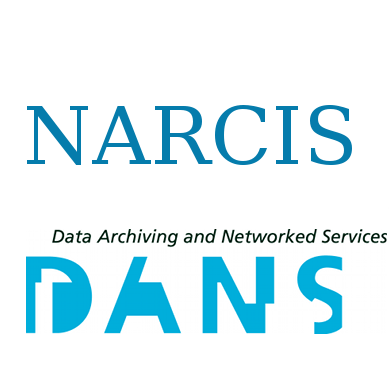Focal point
Location
National Academic Research and Collaborations Information System (NARCIS) is the main Dutch national portal for those looking for information about researchers and their work. NARCIS aggregates data from around 30 institutional repositories. Besides researchers, NARCIS is also used by students, journalists and people working in educational and government institutions as well as the business sector.
NARCIS provides access to scientific information, including (open access) publications from the repositories of all the Dutch universities, KNAW, NWO and a number of research institutes, datasets from some data archives as well as descriptions of research projects, researchers and research institutes.
This means that NARCIS cannot be used as an entry point to access complete overviews of publications of researchers (yet). However, there are more institutions that make all their scientific publications accessible via NARCIS. By doing so, it will become possible to create much more complete publication lists of researchers.
In 2004, the development of NARCIS started as a cooperation project of KNAW Research Information, NWO, VSNU and METIS, as part of the development of services within the DARE programme of SURFfoundation. This project resulted in the NARCIS portal, in which the DAREnet service was incorporated in January 2007. NARCIS has been part of DANS since 2011.
DANS - Data Archiving and Networked Services - is the Netherlands Institute for permanent access to digital research resources. DANS encourages researchers to make their digital research data and related outputs Findable, Accessible, Interoperable and Reusable.
Members:
Resources
Displaying 106 - 110 of 1863Joint ISO/TC211 and OGC Revision of the LADM: Valuation Information, Spatial Planning Information, SDG Land Indicators, Refined Survey Model, Links to BIM, Support of LA Processes, Technical Encodings, and Much More on Their Way!
ISO standards, which are actually being applied, are subject to periodic revision, typically in a 6 to 10-year cycle. A UN-GGIM Meeting of the Expert Group on Land Administration and Management was held on 14-15 March 2017, in Delft and the main conclusion was that the revision of LADM was indeed needed in order to provide better tools to improve tenure security and better land and property rights for all.
Migration, youth, and land in West Africa : Making the connections work for inclusive development
This paper presents the results of a short-term research project conducted in 2017/2018 on the various ways in which migration and land dynamics inWest Africa are intertwined. Contrary to much conventional (policy) thinking in the European Union (EU) today, our point of departure is not that migration is the problem to be solved - nor that (access to) land is the straightforward means to discouraging migration.
Land in urban debates: Unpacking the grab–development dichotomy
On the heels of the rural ‘land grab’ debate, the ongoing urban transition combined with large-scale urban infrastructure investments and land scarcity forces us to also pay more attention to issues of land in urban discussions. Yet how can we conceptualise land-related problems in order to connect and integrate rural and urban debates in overarching discussions of development?
Beyond the urban-rural dichotomy: Towards a more nuanced analysis of changes in built-up land
Urban land and rural land are typically represented as homogenous and mutually exclusive classes in land change analyses. As a result, differences in urban land use intensity, as well as mosaic landscapes combining urban and rural land uses are not represented. In this study we explore the distribution of urban land and urban land use intensity in Europe and the changes therein. Specifically, we analyze the distribution of built-up land within pixels of 1 km2. At that resolution we find that most built-up land is distributed over predominantly non-built-up pixels.
Living on Other People’s Land; Impacts of Farm Conversations to Game Farming on Farm Dwellers’ Abilities to Access Land in the Eastern Cape, South Africa
This contribution analyses the impacts of conversions of commercial – mainly white-owned – farms to wildlife-based production on access to land for farm workers and dwellers in South Africa. They depended on informal arrangements with landowners for access, hence the notions of ‘abilities to access’ and ‘bundles of power’ are more appropriate concepts to analyze their access than bundles of rights.


